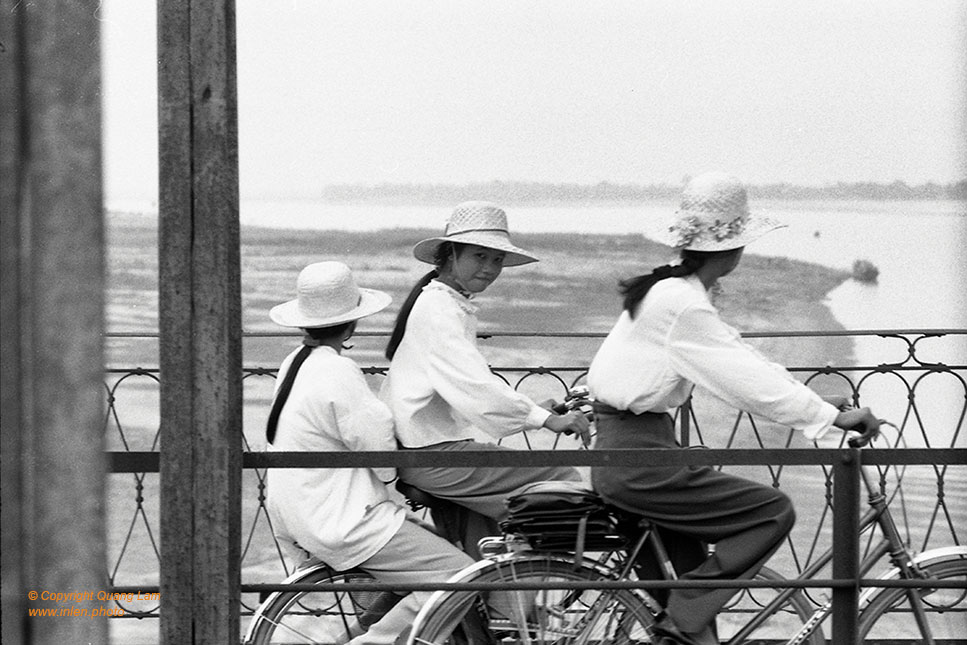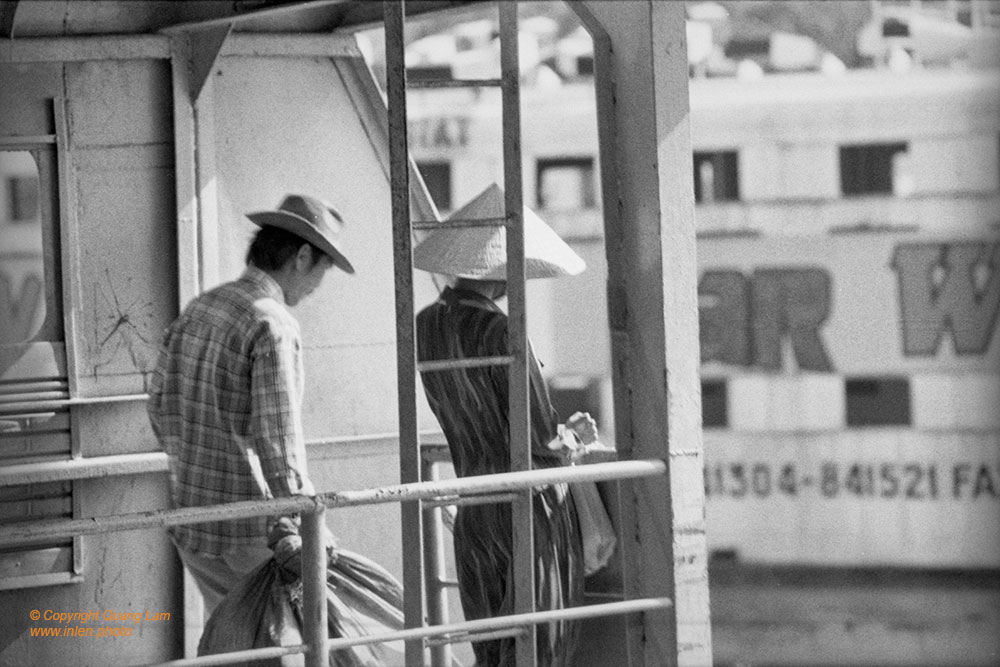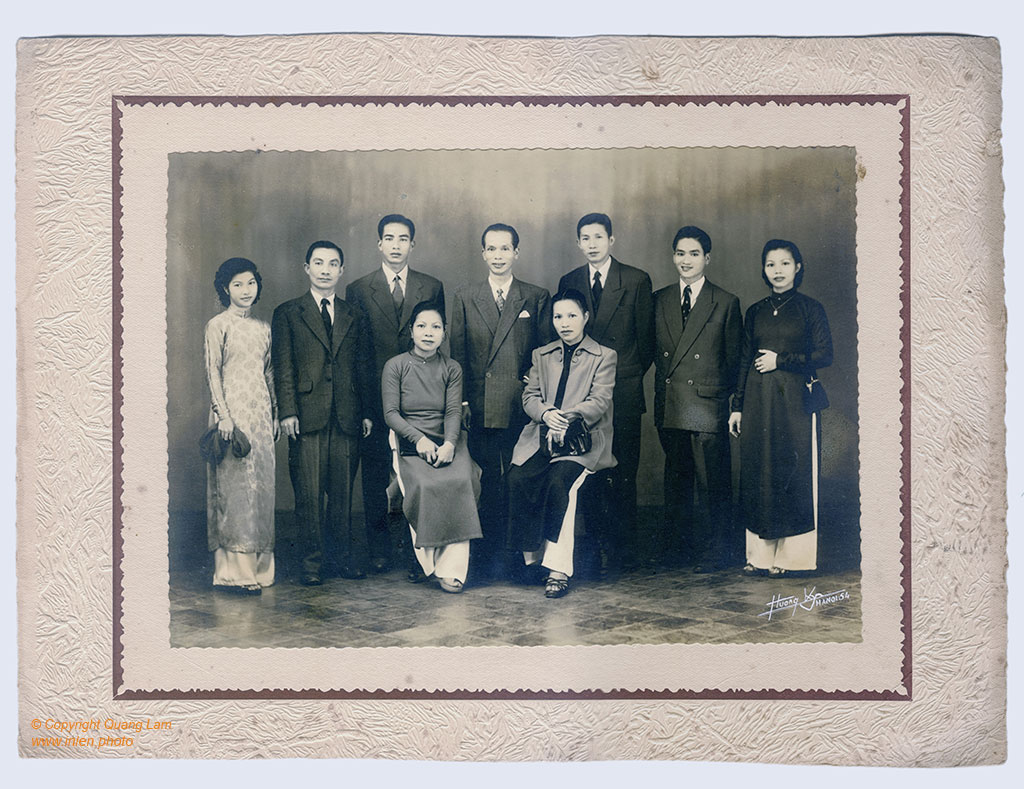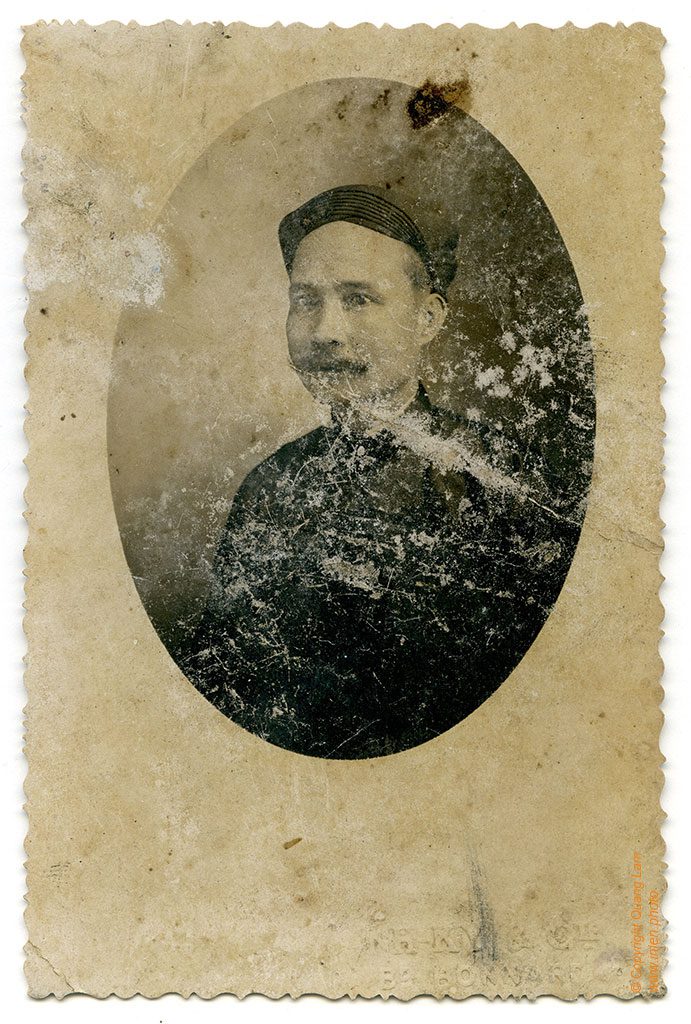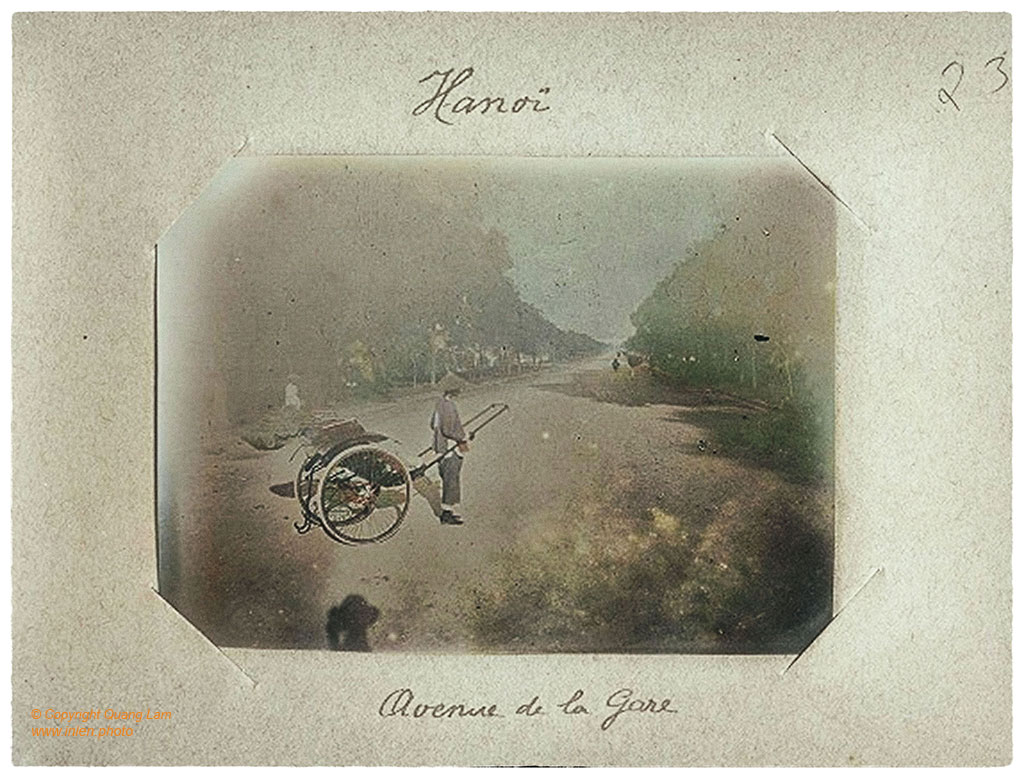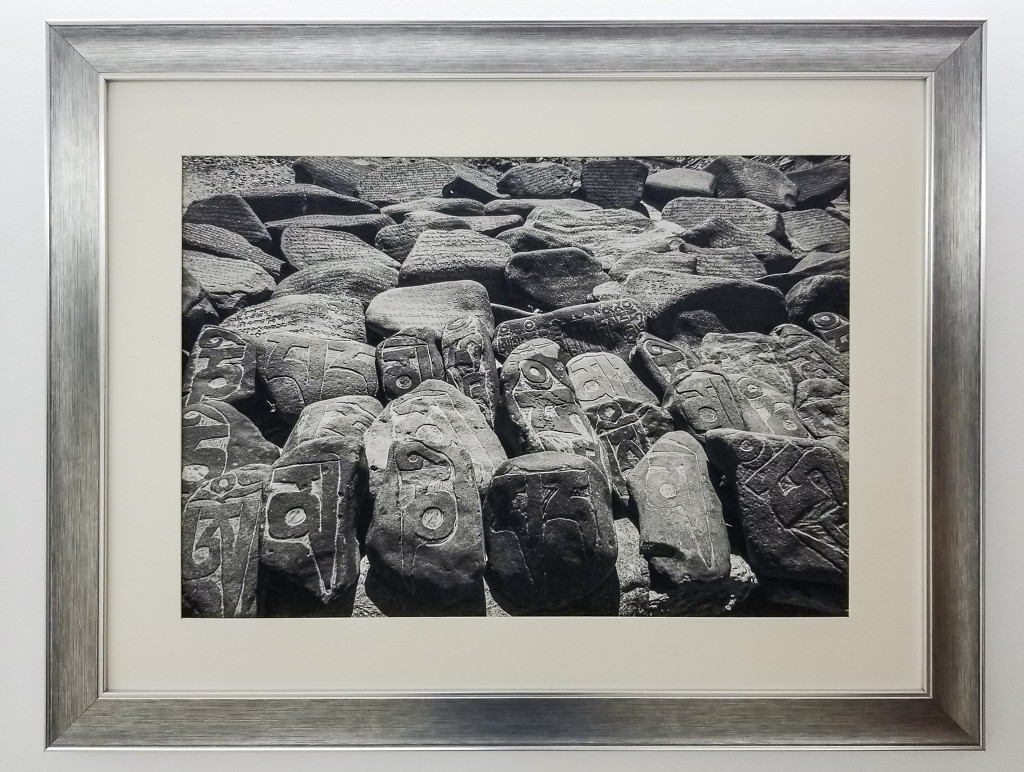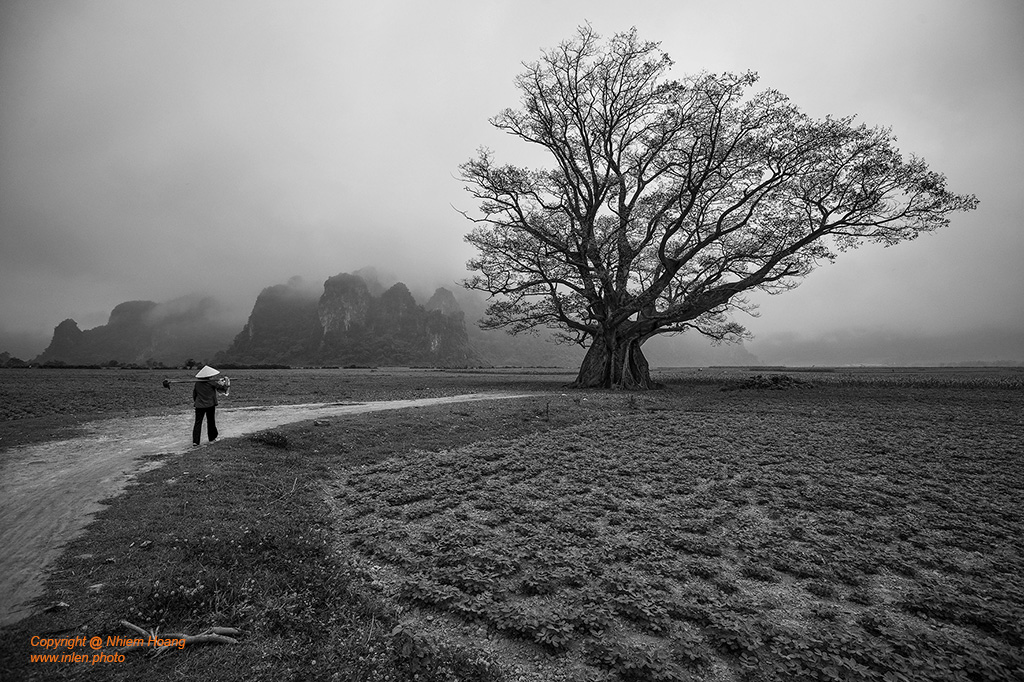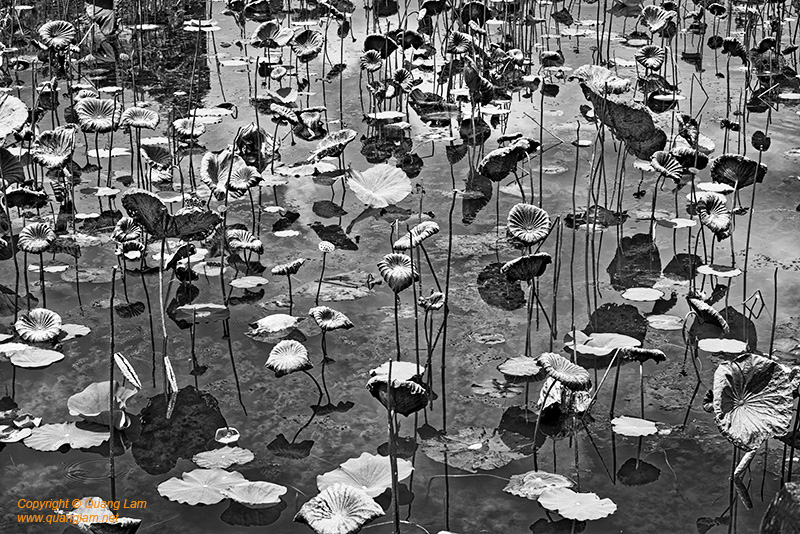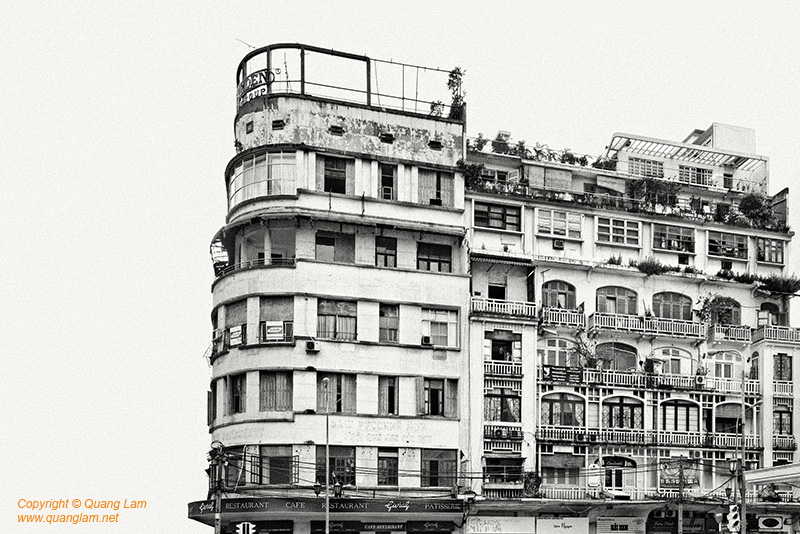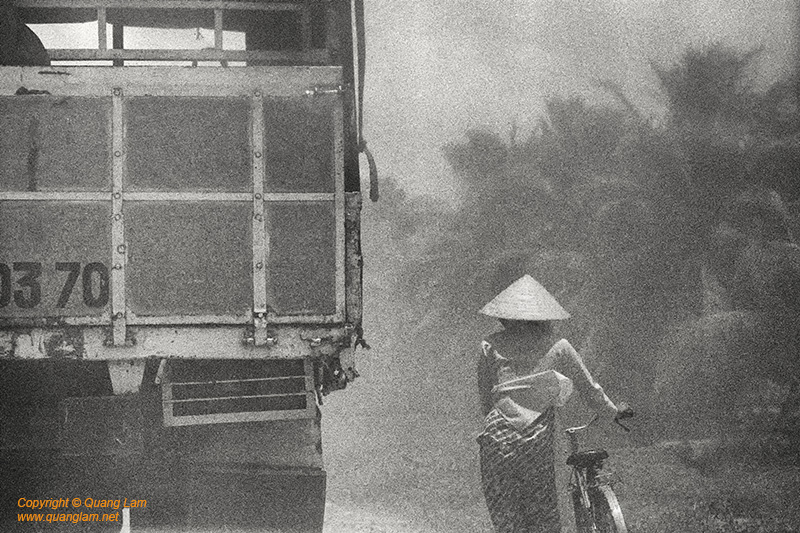“The bridge was built in 1899–1902 by the architects Daydé & Pillé of Paris, and opened in 1903. Before North Vietnam’s independence in 1954, it was called Paul-Doumer Bridge, named after Paul Doumer – the governor-general of French Indochina and then French president. At 2.4 kilometres in length,it was, at that time, one of the longest bridges in Asia.
Some parts of the original structure remain intact, while large sections have been built later to repair the holes.
[…]
Before the bridges were built to span the various arms of the Mekong river, traveling through the Delta meant to wait for the ferries. The most famous one was replaced by the Cần Thơ Bridge, constructed over an arm of the Mekong, the Bassac (or Hau Giang), near the city of Cần Thơ.
“It’s the crossing of a ferry on the Mekong. The elegant man has stepped out of the limousine. He smokes an English cigarette.
[…]
Le nom de Huong Ky Photo est associé d’abord à l’histoire du cinéma au Vietnam puis à la photographie.
Situé dans la rue Hang Trong (Rue des tambours), à Hanoï, le studio photo a été créé en 1905 par M. Nguyen Lan Huong (1887 – 1949).
Cette rue est célèbre pour la production de peintures sur bois spécifiques. L’artisan imprime uniquement les contours noirs de l’image, puis finira les détails à la main.
[…]
Le vrai nom de Khanh Ky est Nguyen Dinh Khanh (1874-1946). Il a ouvert son premier studio de photographie en 1892 dans la rue Hang Da. L’entreprise étant prospère, il en ouvre d’autres à Hanoï, Haiphong, Saigon (1907, 1924) et même en Chine à Guangzhou (1924). Contrairement aux autres photographes, il attache une importance particulière à former ses opérateurs qui viennent principalement du village de Lai Xa, dans la province d’Ha Dong, considéré comme le berceau de la photographie vietnamienne.
[…]
Cet album est une archive rare contenant des instantanés et des clichés réalisés par M. Barbet lors de son voyage de Marseille (France) à Hanoï (Vietnam anciennement Indochine) au début du XXe siècle sur le paquebot de la compagnie Messageries Maritimes.
Habituellement à cette époque, la pratique de la photographie était réalisée par des photographes professionnels car le processus impliquait la mise en place d’équipements lourds et volumineux. La faible sensibilité du film nécessitait également un temps d’exposition long.
[…]
Although Tibetan Buddhism integrates the three main vessels of Buddhism, it is distinguished by a set of practices and historical and artistic traditions that give it its special character.
The immensity of its territory, its millennial and contemporary history have shaped its expression and its art which are not only visible in the temples but along the roads and within the magnificent landscapes of the Himalaya.
In his different trips from 2013 to 2017,
[…]
Photographer Hoang Nhiem extends his interests to social issues and human influences on nature. In his photographs, nature is not just an landscape/object but a victim in a story that needs to be told.
“From Hà Giang to Trà Vinh, I capture resilient trees in their habitat. In my photographs, I use infrared technique to convey their beauty and strong vitality, despite the destruction caused by humanity in their path to ‘develop’ and find convenient comfort.”
[…]
The site of Hue was chosen for its particular properties meeting the requirements of geomancy (Feng Shui) for the establishment of the Nguyen dynasty in the early nineteenth century.
Successively , the emperors prepared and built their graves for their last journey into the afterlife.
The vital fluxes still shine through these funeral palaces whose arrangement scrupulously follows the esoteric rules.
On the site of the tomb of the Emperor Minh Mang where the art of the garden and palaces is at its edge,
[…]
